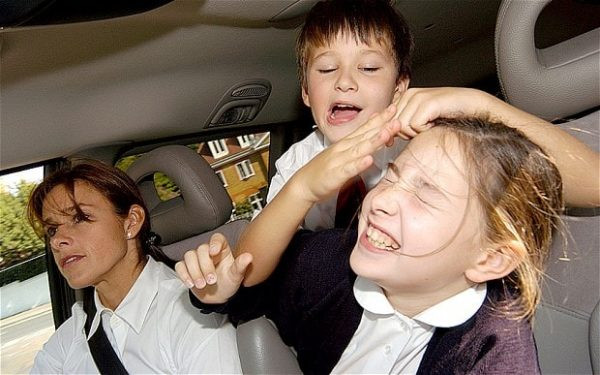Driving is a skill that requires focus, control, and patience, but what happens when your passengers become a distraction? Whether it's a chatty friend, an unruly child, or someone who simply doesn't understand car etiquette, handling misbehaving passengers can be challenging. In this blog, we’ll explore practical strategies to manage disruptive behavior while keeping your driving experience safe and enjoyable. At Get Drivers Ed, we believe that understanding these nuances can make you a more confident and responsible driver.
1. Set Clear Expectations Before the Trip
Before you even start your engine, it's important to establish the rules for the ride. As part of your drivers ed experience with Get Drivers Ed, you'll learn the importance of setting boundaries and expectations in various driving scenarios. If you’re heading out with passengers, let them know what behavior you expect. For example, explain that loud music, constant talking, or distractions are not acceptable while driving. This proactive approach can help minimize issues before they start.
2. Stay Calm and Focused
One of the most crucial aspects of handling misbehaving passengers is maintaining your own composure. Getting frustrated or angry can lead to unsafe driving conditions. As you progress through the drivers ed program with Get Drivers Ed, you'll learn how emotional regulation contributes to safe driving. If a passenger is acting out, take a deep breath and focus on the road. Your primary responsibility is to drive safely, and staying calm will help you manage the situation more effectively.
3. Address Behavior Professionally
If a passenger’s behavior becomes disruptive, address the issue calmly and professionally. Explain how their actions are affecting your ability to drive safely. For instance, you might say, "I need everyone to keep the noise level down so I can concentrate on driving." By addressing the behavior without being confrontational, you’ll encourage cooperation and respect. This approach mirrors the problem-solving skills taught in drivers ed programs, which emphasize clear communication and effective management.
4. Use Distraction-Free Driving Techniques
Incorporating distraction-free driving techniques can help maintain control even when passengers are misbehaving. As taught in Get Drivers Ed, ensuring that all in-car distractions are minimized is key to safe driving. Consider using features like Bluetooth for hands-free communication and ensure that your phone is out of reach to avoid temptations. If a passenger is distracting you, calmly let them know that their behavior is making it difficult for you to stay focused.
5. Implement Safe Driving Practices
Practicing defensive driving techniques can also help manage situations with misbehaving passengers. Defensive driving, a crucial part of the drivers ed curriculum at Get Drivers Ed, involves being aware of potential hazards and reacting appropriately. By using these techniques, you can mitigate the impact of any disruptions and maintain control of your vehicle. This includes maintaining a safe distance from other vehicles, obeying traffic signals, and staying alert to your surroundings.
6. Plan for Frequent Breaks
For longer trips, frequent breaks can be a practical solution to manage passenger behavior. If you’re traveling with kids or anyone who might become restless, plan to stop every couple of hours. Use these breaks as an opportunity to address any issues and allow everyone to stretch their legs. The drivers ed program at Get Drivers Ed covers how to manage longer trips effectively, including the importance of rest and refreshment to keep everyone in good spirits.
7. Encourage Positive Behavior
Finally, rewarding positive behavior can be an effective way to manage misbehaving passengers. Recognize and praise passengers who follow the rules and contribute to a pleasant driving environment. Positive reinforcement encourages good behavior and can help create a more enjoyable experience for everyone. This principle is similar to the positive reinforcement techniques used in drivers ed training, where students are encouraged to practice good driving habits.
Conclusion
Handling misbehaving passengers requires a combination of clear communication, calm demeanor, and effective management strategies. By setting expectations, addressing issues professionally, and implementing distraction-free driving techniques, you can ensure a smoother driving experience. Get Drivers Ed is here to support you in developing the skills necessary to manage all aspects of driving, including how to deal with challenging situations on the road.
For more tips and comprehensive training, consider enrolling in the drivers ed program with Get Drivers Ed. Visit Get Drivers Ed to learn more and enhance your driving skills today. Safe travels!

